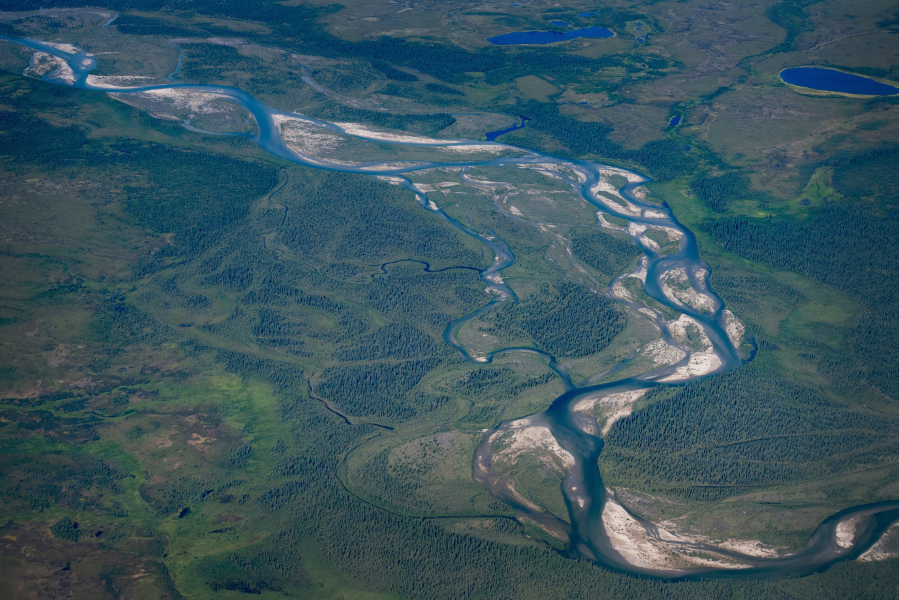KOTZEBUE, Alaska — The plane banks, straightens and begins its descent. I wake groggy from the half sleep of travel. Out the window, clouds whip past and break apart revealing far-north Alaska. Treeless tundra, standing water pooled by the permanent layer of frost lurking below. Kotzebue, a speck of a town bounded on three sides by salt water and accessible only by air or boat, is our destination. The Alaska Airlines 747 descends, fighting the coastal wind and rain.
I’m here with Chris Kopczynski, his brother Cary Kopczynski and Jim Wood. We hustle out of the plane and into the rain, gathering our gear (50-pound kayak, 20-pound carry-on, 50-pound duffel full of food, clothing and other things) and call Husky Cab, one of the three cab companies servicing the 3,000 or so residents.
Which brings me to the roads. For most of us, geography is defined by roads. This holds true whether you’re in the city (turn right on Monroe, Siri drones) or in the country (stay left at the fork). Our spherical world is organized around straight lines. Not so in Alaska, particularly the farther north you go. Alaska has about 15,000 miles of public roads, accounting for a tiny fraction of the United States’ more than 4 million miles of road. This lack is visible from the air, even flying into and out of Anchorage to say nothing of Kotzebue, which as of 2013 contributed 28 miles of road (only 7 miles of which are paved) to these totals.
A battered and mud-stained minivan drives us three or four blocks to the one hotel in town. The Nulla’vik Hotel is owned by the Alaska Native Corporation and has the feeling of a Marriott, replete with a small concession stand and Starbucks coffee every morning. The hotel is roughly 100 yards from the sea and stands in stark contrast to the muddy streets lacing between low-slung prefab buildings, weathered from the elements, yards full of machines: Land-locked snowmobiles waiting for winter, decomposing motorbikes, trucks slowly diving back into the earth.



